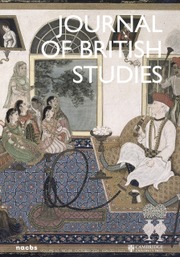In his ambitious and wide-ranging study, A Quest for Security, Jesse Tumblin convincingly argues for collective security as explanation for and driver of new forms of imperial organization and sovereignty. Employed in a broad and well-conceived theoretical framework, “security” here mediates between concepts of imperial defense, violence, and coercion while taking into account accompanying emotions of fear, hope, and anxiety. Where trade, migration, and formalized constitutional schemes failed to make progress toward imperial federation, security created space for negotiation around shared priorities. Tumblin makes a critical intervention by paying necessary attention to the persistence of colonial hierarchies and racialized thought to processes of militarization and state formation. One of the real strengths of this book is the breadth of Tumblin's study. The inclusion of Ireland and India alongside the white settler dominions offers a critical new perspective. Throughout, Tumblin's fluency and familiarity with these multiple global contexts and archives is evident, traversing extensive scales of thought from speakers at local town meetings on federation in Fiji all the way up to Whitehall.
The book is structured on six case studies, organized chronologically, which allows Tumblin to map the accumulation and development of ideas and the impact of ongoing imperial wars. Chapter 1 deals with the popularity of federation in the British Empire, specifically the Pacific (Australia, New Zealand, Fiji), as a way of competing for dominance and as an antidote to the strategic danger of invasion, “either military or migratory” (22). He positions the South African war as a warning and an opportunity for those hoping to challenge imperial order: for Australia, the war gave “a glimpse of the potential of federal military power” (43). The shifting terrain created by the South African war and its stimulus for reform, envisioned by Hugh Oakley Arnold-Foster in The War Office, the Army, and the Empire (1900), made militarization legitimate and desirable (67). In chapter 2, the drives for military reform in the colonies are shown to be part of the global process of militarization before the First World War. Especially important is the investigation of India: Indian princely responses to Curzon's review of the military as Viceroy indicate how military subsidy became a zone of contention over sovereignty.
The third chapter is concerned with dominionhood and the “Dominion Moment,” through the 1907 Colonial Conference: the evolution of the constitutional category—vaguely defined—was a tool to create distance from the “colonies” and proximity to Britain through military competency. Race, here, is shown to be critical to ideas of security in the dominion state, as a mode through which internal security might be challenged by groups racialized as “other” and through understandings of martial fitness. Would these new dominions stay within the “Britannic Alliance” as, through militarization, they grew into nationhood? Chapter 4 explores an empire on the brink of global warfare: through the 1911 Imperial Conference and infrastructural development in India and South Africa, Tumblin shows that the remaking of sovereignty had made these states more alike as they coalesced around security.
These new sovereignties were tested during the First World War with conscription, as racial selectivity, formal and informal, came sharply into the foreground. “How,” Tumblin asks, “did non-white British subjects fit into the machine of imperial security?” (194). The case of one Rupert Reuben, resident in Brighton at boarding school at the start of the war and son of a wealthy family posted to Singapore, where his father was a stock and real estate trader, is used to great effect, painstakingly reconstructed to show his travails with the War Office when called to serve in mid-1918. Reuben's family was mobile and multilingual: Jews born in Ottoman Baghdad, naturalized residents of Singapore, living in Bombay in British India. He was variously identified as “Asiatic,” “Oriental,” and “a native of Singapore.” His exemplary case revealed the “fraught contradictions of the empire's constitutional framework” and the ramifications of “race” for recruitment and conscription throughout the empire (204). This was particularly fraught in Ireland, replicated in its dominion diasporas (chapter 6). These unresolved tensions around the authority Britain held over its peoples and the balance of power between Britain and the rise of militarized sovereignty in the empire is artfully explored in the interwar period.
This is an important work for scholarship on the constitutional and diplomatic function of the British Empire, from the end of the nineteenth century through to the 1931 Statute of Westminster when, as Tumblin has traced, the division of sovereignty was complete. The Quest for Security is an original and detailed exploration of the dilemmas and tensions of strategy and constitution of later imperialism, internally within the new states and internationally for global recognition. A significant read for all scholars of colonialism, diplomacy, international relations, and the First World War.



